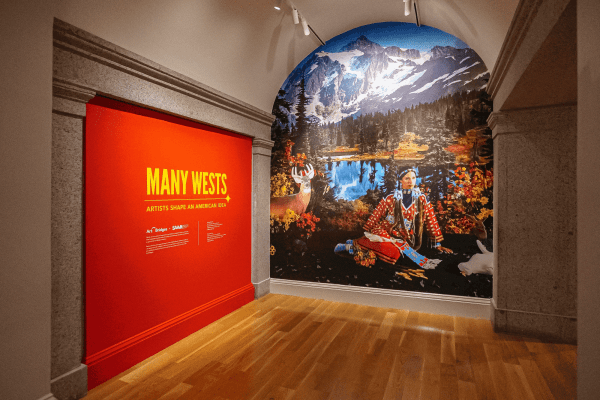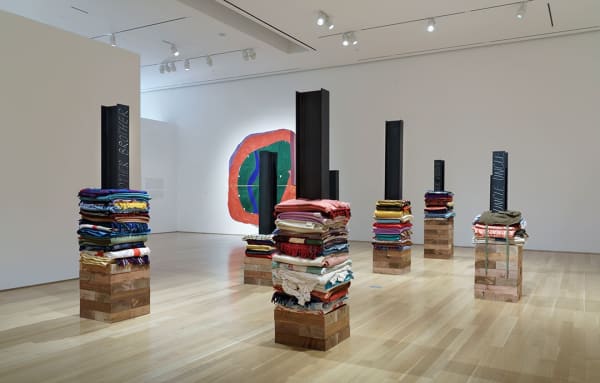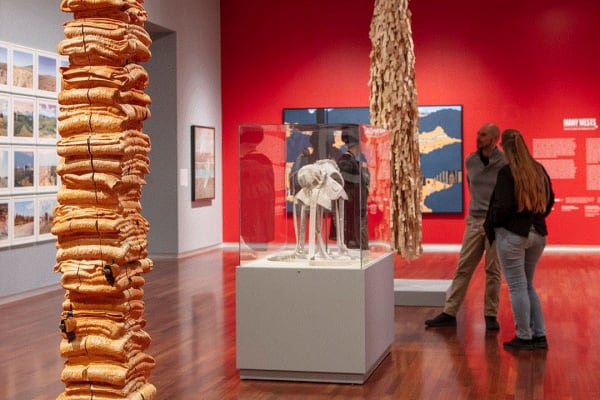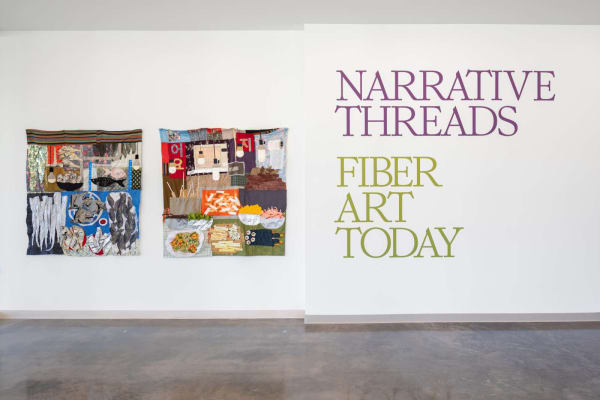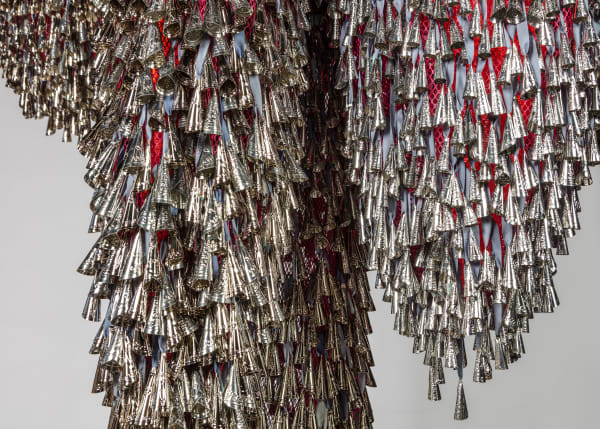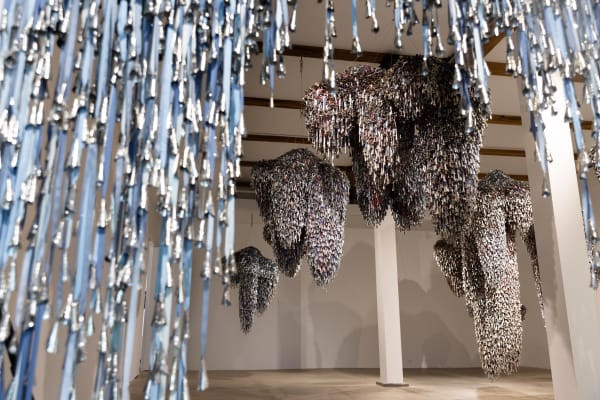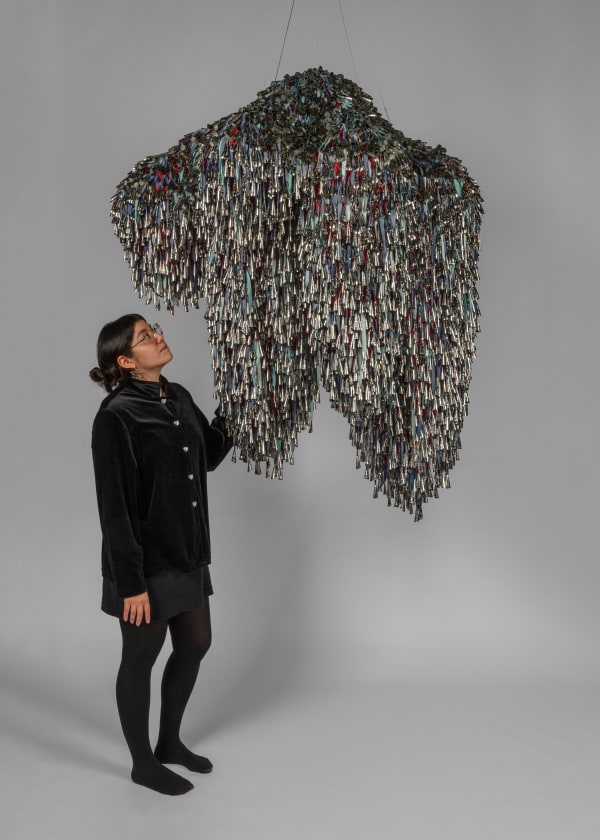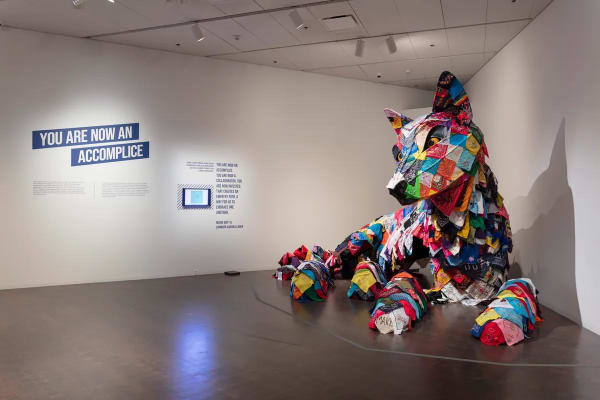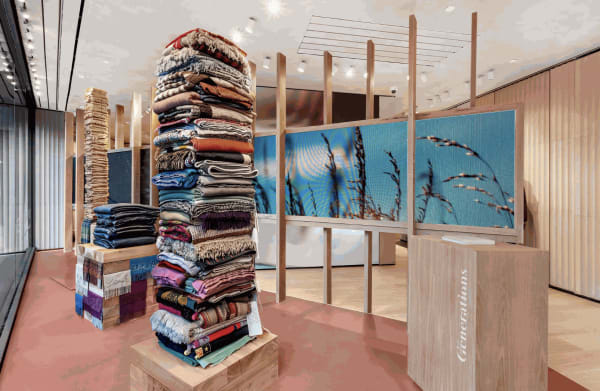Marie Watt b. 1967
Marie Watt (b. 1967) is a Seneca artist whose bold, multi-sensory visual language celebrates and fosters community connections. Inviting people to explore and expand the boundaries of mutual relationships is an essential part of Watt’s aesthetic vocabulary. As a citizen of the Seneca Nation and a woman with German-Scot ancestry, her perspective has been shaped by values of connectivity and sharing.
Drawing from history, biography, Iroquois protofeminism, and Indigenous teachings, Watt mobilizes her art practice as a form of visual and experiential storytelling. She frequently invites collaborators into her creative process, either as literal participants in the art making process or as contributors of materials or narratives that are then integrated into the work. Watt embraces and centers the stories embedded within those materials and narratives. Examples include her use of donated and vintage blankets, which frequently bear the scars of their histories in the form of flaws such as rips, repairs, or faded colors. Such markings connect Watt to the people who once used them, and to the moments of their lives that read like visual echoes stored within the objects.
Watt’s newest series of works mobilizes jingle cones, a material historically made from the circular tin lids of tobacco cans that have become an iconic element of jingle dress, a genre of clothing used in traditional Indigenous jingle dance. Though their invention and use as fashion adornments dates at least to the late 1800s, jingle cones made from mass-produced, tin tobacco lids became an iconic element of Indigenous dance traditions during the Spanish Flu pandemic of 1918.
“One version of the story is that a member of the Ojibwa nation had a sick granddaughter,” recalls Watt. “They had this dream in which they were instructed to attach tin jingles to a dress and have women dance around this sick child while wearing the dress. The idea was that the sound would be healing. It’s assumed the medicine worked, because the dance was shared with other tribal communities.”
By setting up situations through which stories can be exchanged, shared, amplified, and archived, Watt’s sculptures, installations, and collaborative projects exist not only as aesthetic phenomena but also as loci for collective experiences, and as physical records of the people and communities connected through the work.
Watt earned her MFA from Yale and attended the Institute of American Indian Arts with a focus on museum studies and studio arts. Her work has recently been featured in solo exhibitions at the Denver Art Museum in Colorado and Johnson Museum of Art at Cornell University, among many others, and group exhibitions at the Whitney Museum of American Art, Smithsonian American Art Museum, Seattle Art Museum, Crystal Bridges Museum of American Art, and the Peabody Essex Museum, Salem, MA, among many others. Watt’s work is included in the permanent collections of more than 80 museums and public institutions, including the Metropolitan Museum of Art, New York, NY; National Gallery of Art, Washington, DC; Smithsonian American Art Museum, Washington, DC; Whitney Museum of American Art, New York, NY; Crystal Bridges Museum of American Art, Bentonville, AR; National Gallery of Canada, Ottawa, Ontario, CA; Buffalo AKG Art Museum, Buffalo, NY; and Baltimore Museum of Art, Baltimore, MD.
-
 Marie WattSky Dances Light: Forest IV, 2023Tin jingles, cotton twill tape, polyester mesh, steel100 x 38 x 35 in.
Marie WattSky Dances Light: Forest IV, 2023Tin jingles, cotton twill tape, polyester mesh, steel100 x 38 x 35 in.
254 x 96.5 x 88.9 cm
67 lbs -
 Marie WattSky Dances Light: Forest V, 2023Tin jingles, cotton twill tape, polyester mesh, steel120 x 58 x 39 in.
Marie WattSky Dances Light: Forest V, 2023Tin jingles, cotton twill tape, polyester mesh, steel120 x 58 x 39 in.
304.8 x 147.3 x 99.1 cm
120 lbs -
 Marie WattSky Dances Light: Forest VI, 2023Tin jingles, cotton twill tape, polyester mesh, steel99 x 61 x 45 in.
Marie WattSky Dances Light: Forest VI, 2023Tin jingles, cotton twill tape, polyester mesh, steel99 x 61 x 45 in.
251.5 x 154.9 x 114.3 cm
120 lbs -
 Marie WattSky Dances Light: Kin XIII, 2023Tin jingles, cotton twill tape, polyester mesh, steel30 x 17 x 15 in.
Marie WattSky Dances Light: Kin XIII, 2023Tin jingles, cotton twill tape, polyester mesh, steel30 x 17 x 15 in.
76.2 x 43.2 x 38.1 cm
14 lbs -
 Marie WattSky Dances Light: Kin XIV, 2023Tin jingles, cotton twill tape, polyester mesh, steel34 x 18 x 12 in.
Marie WattSky Dances Light: Kin XIV, 2023Tin jingles, cotton twill tape, polyester mesh, steel34 x 18 x 12 in.
86.4 x 45.7 x 30.5 cm
13 lbs -
 Marie WattSky Dances Light: Kin XV, 2023Tin jingles, cotton twill tape, polyester mesh, steel35 x 17 x 19 in.
Marie WattSky Dances Light: Kin XV, 2023Tin jingles, cotton twill tape, polyester mesh, steel35 x 17 x 19 in.
88.9 x 43.2 x 48.3 cm
19 lbs -
 Marie WattSky Dances Light: Revolution IX, 2023Tin jingles, cotton twill tape, polyester mesh, steel61 x 46 x 42 in.
Marie WattSky Dances Light: Revolution IX, 2023Tin jingles, cotton twill tape, polyester mesh, steel61 x 46 x 42 in.
154.9 x 116.8 x 106.7 cm
52 lbs -
 Marie WattSky Dances Light: Revolution VII, 2023Tin jingles, cotton twill tape, polyester mesh, steel60 x 49 x 51 in.
Marie WattSky Dances Light: Revolution VII, 2023Tin jingles, cotton twill tape, polyester mesh, steel60 x 49 x 51 in.
152.4 x 124.5 x 129.5 cm
80 lbs -
 Marie WattSky Dances Light: Revolution VIII, 2023Tin jingles, cotton twill tape, polyester mesh, steel50 x 38 x 35 in.
Marie WattSky Dances Light: Revolution VIII, 2023Tin jingles, cotton twill tape, polyester mesh, steel50 x 38 x 35 in.
127 x 96.5 x 88.9 cm
45 lbs -
 Marie WattSky Dances Light: Solo X, 2023Tin jingles, cotton twill tape, polyester mesh, steel48 x 36 x 38 in.
Marie WattSky Dances Light: Solo X, 2023Tin jingles, cotton twill tape, polyester mesh, steel48 x 36 x 38 in.
121.9 x 91.4 x 96.5 cm
47 lbs (Video Forthcoming) -
 Marie WattSky Dances Light: Solo XI, 2023Tin jingles, cotton twill tape, polyester mesh, steel76 x 53 x 36 in.
Marie WattSky Dances Light: Solo XI, 2023Tin jingles, cotton twill tape, polyester mesh, steel76 x 53 x 36 in.
193 x 134.6 x 91.4 cm
78 lbs (Video Forthcoming) -
 Marie WattSky Dances Light: Solo XII, 2023Tin jingles, cotton twill tape, polyester mesh, steel72 x 40 x 40 in.
Marie WattSky Dances Light: Solo XII, 2023Tin jingles, cotton twill tape, polyester mesh, steel72 x 40 x 40 in.
182.9 x 101.6 x 101.6 cm
49 lbs -
 Marie WattVivid Dream (Loop), 2023Copper plate photogravure, printed on gampi, with silver leaf, calico fabric, collage, and cotton string elements.
Marie WattVivid Dream (Loop), 2023Copper plate photogravure, printed on gampi, with silver leaf, calico fabric, collage, and cotton string elements.
31 1/2 x 19 in.
80 x 48.3 cmEdition of 5 plus 1 AP -
 Marie WattVivid Dream (Awakening) I, 2022Tin jingles, cotton twill tape, polyester mesh, steel36 x 55 x 35 in.
Marie WattVivid Dream (Awakening) I, 2022Tin jingles, cotton twill tape, polyester mesh, steel36 x 55 x 35 in.
91.4 x 139.7 x 88.9 cm
54 lbs. (Video Forthcoming) -
 Marie WattVivid Dream (Awakening) II, 2022Tin jingles, cotton twill tape, polyester mesh, steel58 x 46 x 48 in.
Marie WattVivid Dream (Awakening) II, 2022Tin jingles, cotton twill tape, polyester mesh, steel58 x 46 x 48 in.
147.3 x 116.8 x 121.9 cm
90 lbs -
 Marie WattVivid Dream (Awakening) III, 2022Tin jingles, cotton twill tape, polyester mesh, steel60 x 49 x 50 in.
Marie WattVivid Dream (Awakening) III, 2022Tin jingles, cotton twill tape, polyester mesh, steel60 x 49 x 50 in.
152.4 x 124.5 x 127 cm
103 lbs -
 Marie WattCompanion Species (Gather to Sing), 2021Reclaimed wool blankets, embroidery floss, thread, cotton twill tape, tin jingles82 x 194 in.
Marie WattCompanion Species (Gather to Sing), 2021Reclaimed wool blankets, embroidery floss, thread, cotton twill tape, tin jingles82 x 194 in.
208.3 x 492.8 cm -
 Marie WattSkywalker Greets Sunrise, VIII, 2021Steel I-beam, cold rolled steel cap96 x 24 x 24 in
Marie WattSkywalker Greets Sunrise, VIII, 2021Steel I-beam, cold rolled steel cap96 x 24 x 24 in
243.8 x 61 x 61 cm
127 lbs -
 Marie WattSkywalker/Skyscraper (Sunrise), 2021Reclaimed wool blankets, steel I-beam, cedar88 x 30 x 30 in.
Marie WattSkywalker/Skyscraper (Sunrise), 2021Reclaimed wool blankets, steel I-beam, cedar88 x 30 x 30 in.
223.5 x 76.2 x 76.2 cm -
 Marie WattUntitled, 2019Medium Reclaimed wool blankets, embroidery floss, and threadheight 136 5/8 in.
Marie WattUntitled, 2019Medium Reclaimed wool blankets, embroidery floss, and threadheight 136 5/8 in.
height 347 cm -
 Marie WattCOMPANION SPECIES (UNDERBELLY), 2018Aromatic cedar130 x 183 x 136 in.
Marie WattCOMPANION SPECIES (UNDERBELLY), 2018Aromatic cedar130 x 183 x 136 in.
330.2 x 464.8 x 345.4 cm -
 Marie WattEngine (installation view), 2009Hand-felted wool, wood, three-channel projections9 x 20 x 13 ½ feet
Marie WattEngine (installation view), 2009Hand-felted wool, wood, three-channel projections9 x 20 x 13 ½ feet -
 Marie WattCompanion Species (A Distant Song)Reclaimed satin bindings, industrial felt, thread32 1/2 x 168 in.
Marie WattCompanion Species (A Distant Song)Reclaimed satin bindings, industrial felt, thread32 1/2 x 168 in.
82.5 x 426.7 cm
-

Marie Watt in Many Wests: Artists Shape an American Idea
Smithsonian Art Museum 28 Jul 2023 - 14 Jan 2024This exhibition presents an opportunity to examine previous misconceptions, question racist clichés, and highlight the multiple communities and histories that continue to form this iconic region of the United States....Read more -

LightSpace
KAVI GUPTA | WASHINGTON BLVD. FL. 2 22 Jul - 14 Oct 2023Kavi Gupta presents Lightspace, a group exhibition examining aesthetic spaces, physical and metaphysical, within contemporary art where concepts of lightness are central to the work. In this exhibition, a lightspace...Read more -

Marie Watt: Sky Dances Light
835 W Washington Blvd. FL 1. 10 Jun - 30 Sep 2023Kavi Gupta presents Sky Dances Light, a solo exhibition of new works by celebrated, interdisciplinary Seneca artist Marie Watt, whose bold, multi-sensory visual language celebrates and fosters community connections. Watt’s...Read more -

Marie Watt: Sun Drinks White
12345 College Blvd, Overland Park, KS. 24 Mar - 30 Jul 2023The title of this exhibition is borrowed from a poem titled 'Haiku Journey' by Indigenous writer, photographer, and scholar Kimberly Blaeser. The poem is structured in four parts, each representing...Read more -

Marie Watt: Singing Everything
299 Grand Street, New York, New York. 12 Mar - 20 May 2023Marc Strauss second solo show exhibition, Singing Everything, owith interdisciplinary American artist Marie Watt. A member of the Seneca Nation, Watt also has German-Scott ancestry. Her layered and complex influences...Read more -

Storywork: The Prints of Marie Watt
Cornell University. 114 Central Avenue Ithaca, NY. 11 Feb - 30 Jul 2023Multimedia artist Marie Watt is a storyteller. As a member of the Seneca Nation (one of six that comprise the Haudenosaunee Confederacy) with German-Scots ancestry, her stories draw from Native...Read more -

Marie Watt in Many West
Utah, Salt Lake City 4 Feb - 11 Jun 2023A groundbreaking, nationally touring exhibition re-examining the American West through modern and contemporary art is coming to Salt Lake City in early 2023. Many Wests: Artists Shape an American Idea...Read more -

Marie Watt in Narrative Threads: Fiber Art Today
Houston, Texas 13 Jan - 13 May 2023Celebrating a new generation of international artists at the forefront of fiber arts, Narrative Threads: Fiber Art Today includes work by twenty-two artists including Igshaan Adams, Hangama Amiri, Felipe Baeza,...Read more -

Marie Watt in Social Fabric Exhibition Opening Reception
Newport, RI 28 Oct 2022 - 11 Jun 2023From the cradle to the grave, human beings are wrapped in, and surrounded by textiles. What people make to clothe, protect, and decorate themselves and their spaces, tells us about...Read more -

Marie Watt: Making Knowing: Craft in Art, 1950–2019
99 Gansevoort St, New York, NY 10014. 22 Nov 2019 - 20 Feb 2020Making Knowing: Craft in Art, 1950–2019 foregrounds how visual artists have explored the materials, methods, and strategies of craft over the past seven decades. Some expand techniques with long histories,...Read more
-
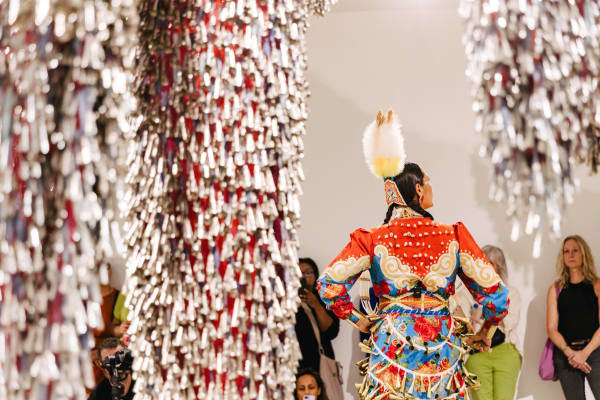
Marie Watt: Sky Dances Light | Acosia Red Elk Live Performance
Kavi Gupta | Washington Blvd | Fl. 1 November 14, 2023Song Credits: Contest, The Boyz Waterkeeper (Side-Step), Northern CreeRead more -
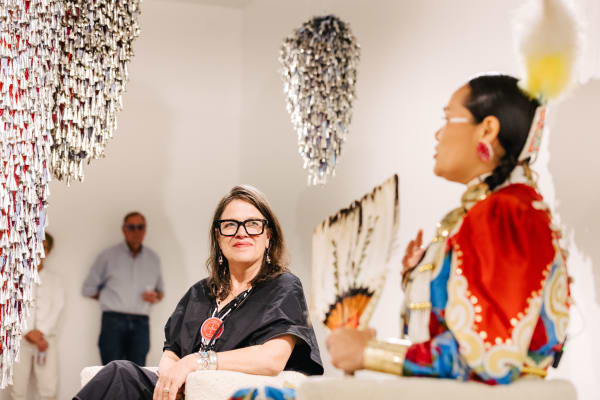
Marie Watt: Sky Dances Light | Artist Discussion: Marie Watt x Acosia Red Elk
Kavi Gupta | Washington Blvd | Fl. 1 November 14, 2023Read more -
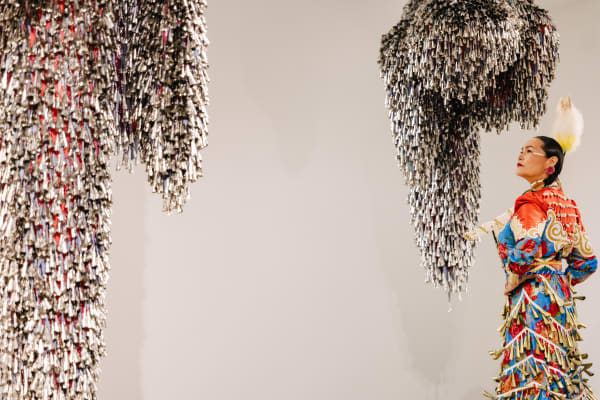
Marie Watt: Sky Dance Light | Acosia Red Elk Performance
Kavi Gupta | Washington Blvd | Fl. 1 November 2, 2023Read more -
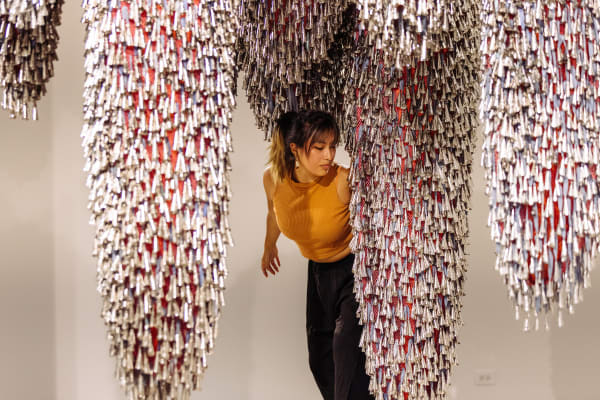
Kavi Gupta Gallery: Marie Watt "Sky Dances Light" Ji Hae Yepa-Pappan Performance
September 26, 2023Read more -

Marie Watt: Explore the story of Turtle Island | West to East
National Gallery of Art March 24, 2023Marie Watt, artist and member of the Seneca Nation, takes us into the story of Turtle Island and its connection to her work, family, and...Read more -
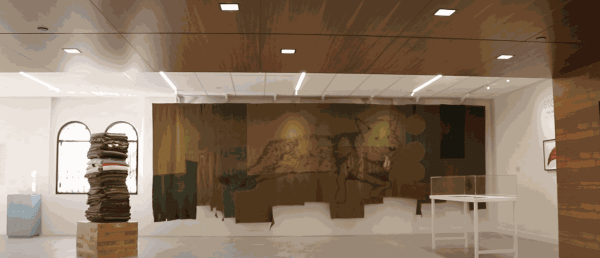
Storywork: The Prints of Marie Watt
The University of San Diego February 25, 2022Read more -
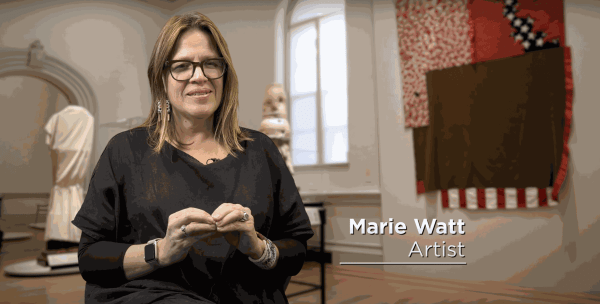
Meet the Artist: Marie Watt
Smithsonian American Art Museum February 17, 2022Explore Marie Watt’s artistic journey through unconventional materials and textiles. In this video she discusses how her work “Edson’s Flag” honors veterans, her family, and...Read more -

Marie Watt
Smithsonian American Art Museum October 27, 2018Read more -
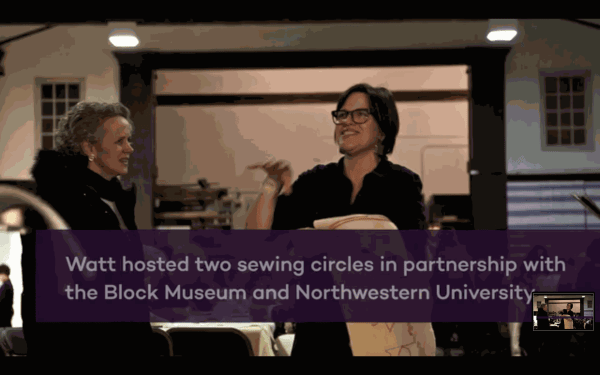
Marie Watt: Block Museum Equity Sewing Circle
Northwestern University Block Museum February 20, 2017Read more
-

Marie Watt Invites You to Hug a Jingle Cloud
Erin Joyce, Hyperallergic, August 16, 2023 -

Sculpting unity
Vasia Rigou, Reader, July 31, 2023 -

10 Art Shows to See in Chicago This Summer
Zoë Lescaze , Hyperallegic, July 17, 2023 -

Art Enlivens Chicago in the Summer Season at Kavi Gupta with Marie Watt and Esmaa Mohamoud
Vasia Rigou, Artnet News, June 23, 2023 -

Marie Watt: Sound, Dancing, Community And Healing At Kavi Gupta Gallery In Chicago
Chad Scott, Forbes, June 7, 2023 -

Marie Watt: Meet the Native Women Artists Claiming Their Place in New York
Devorah Lauter, CULTURED, May 10, 2023 -

How I Made This: Marie Watt and Cannupa Hanska Luger’s Crowdsourced She Wolf
Julia Travers, ArtNews, March 30, 2023 -

Native Song: Marie Watt’s Communal Incantations in Fabric
Glen Adamson, Art News , November 3, 2021 -

Marie Watt: Earthmover
Laumier Sculpture Park , September 22, 2021 -

Marie Watt: Finding Creative Ways to Collaborate Through the Pandemic
Gabriella Angeleti, The Art Newspaper, May 26, 2021 -

Marie Watt: An Artist Sews A Sense of Community
Robin Cembalest, Yale Alumni Magazine , March 20, 2021 -

Marie Watt: Loro Piana Opening With a Powerful Art Installation
Brooke Bobbs, Vogue, December 14, 2020 -

Marie Watt: Blanket Stories: Transportation Object, Generous Ones, Trek
Michelle Reynolds , Tacoma Art Museum , September 3, 2020
-

The Armory Show 2023
Javits Center, New York, NY 8 - 10 Sep 2023VIP PREVIEW Thursday, September 7 PUBLIC DATES Friday, September 8 | 11 AM–7 PM Saturday, September 9 | 11 AM–7 PM Sunday, September 10...Read more -

Sky Dances Light: Acosia Red Elk
Kavi Gupta | Washington Blvd. Fl. 1 12 Aug 2023Kavi Gupta invites you to experience the beauty, dynamism and healing energy of traditional Indigenous Jingle Dance with a special performance by Acosia Red Elk...Read more -
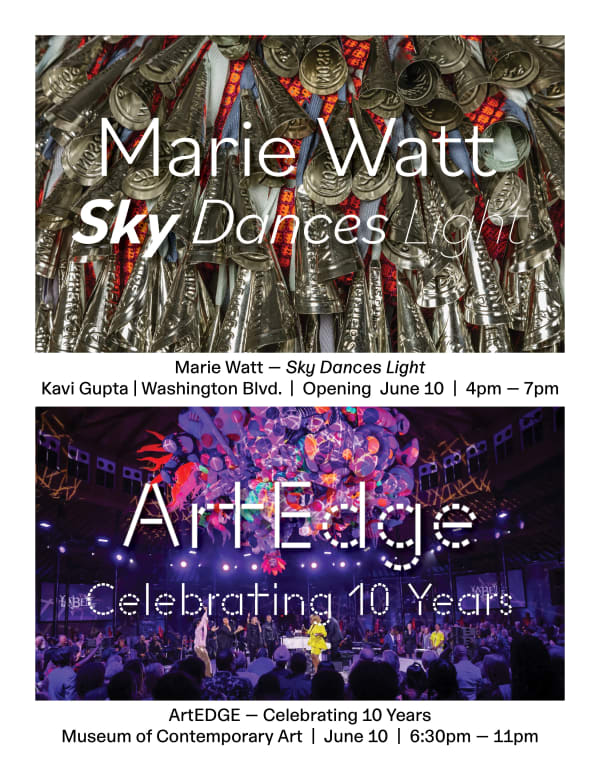
Opening Reception: Marie Watt: Sky Dances Light
KAVI GUPTA | WASHINGTON BLVD. FL. 1 10 Jun - 30 Sep 2023Join us at Kavi Gupta | Washington Blvd on Saturday, June 10th from 4–7 PM for the opening reception of Sky Dances Light , a...Read more
























